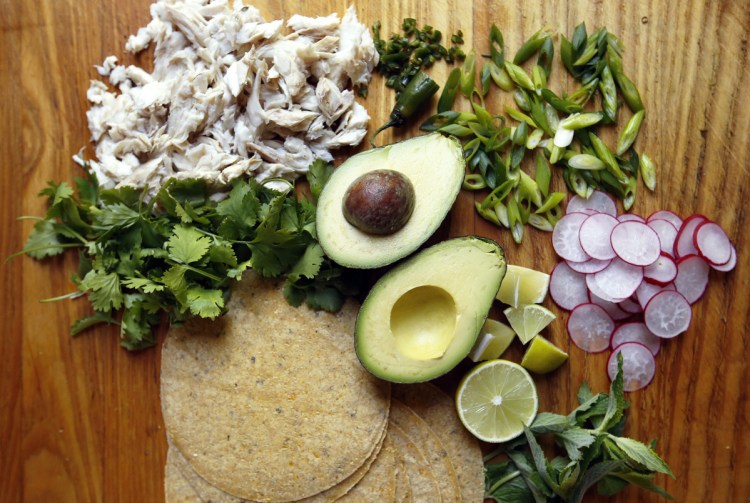This week marks the fourth anniversary of my very first Green Plate Special column. Together we’ve covered a lot of ground regarding the many small steps we, as home cooks and everyday eaters, can take on the path to making our shopping, cooking and eating habits more sustainable. In many of those columns we’ve explored new initiatives afoot in Maine designed to source food better, cook it more efficiently, and not waste even a morsel. Some of those initiatives warrant a second look to see if we’ve made any progress.
The topic of that very first column, published on June 15, 2014, centered on the then three-year-old Gulf of Maine Research Institute’s Out of the Blue campaign to encourage restaurants to take the pressure off overfished seafood species by instead serving more underused ones, specifically Acadian redfish, Atlantic mackerel, cape shark (dogfish), whiting and Atlantic pollock. All are bountiful, well-managed species from the Gulf of Maine that – due to lack of market demand – fishermen were not catching to anywhere near the allowable limits. GMRI recruited 14 restaurants in Maine, New Hampshire and Massachusetts to promote these fish on their menus in a monthly rotation.

Christine Burns Rudalevige squeezes lime juice on the fish before tossing all the ingredients together and stuffing into warmed tortillas.
Today, the number of restaurants participating in the Out of the Blue program has increased to 24. And some of them have made these fishes regular menu items, according to Kyle Foley, sustainable seafood program manager at GMRI. For example, Andy’s Old Port Pub in Portland now uses Atlantic pollock to make their standard fish and chips (traditionally, cod, considered a “vulnerable” fish, and haddock were more typical choices).
While GMRI still considers these five species to be “underloved,” Foley says several indicators show eaters are moving the dial in the right direction. For one, the average price per pound that fishermen can get for landing all five of the species has increased. If the price isn’t high enough for any fish, fishermen won’t feel it’s worth spending their time or costly diesel fuel to catch these species. Whiting prices are up 35 percent, and pollock consistently fetches more than $1 a pound; before 2012, the price hovered around 50 cents. At the same time, redfish landings, which from the 1980s through 2012 never went over 5-million pounds per year, since 2012 have tallied between 8 and 11 million pounds annually.
Hannaford now regularly sells local redfish and pollock in their fresh fish cases; before 2012, this wasn’t the case. Also, in 2015, GMRI formed a partnership with foodservice giant Sodexo, which manages the dining halls at five UMaine’s campuses. By 2020, these campuses have pledged to serve flaky white fish only if it is responsibly harvested from the Gulf of Maine, and they will focus on serving underloved fish. Two campuses have already hit that mark. Sodexo also worked with its supplier, Maine Shellfish Company, to create the “shark bite,” a breaded dogfish (aka cape shark) product that was the first value-added dogfish product on the marketplace on the regional marketplace.
What can you do? Foley encourages Mainers to ask for these underloved fish if they do not see them on menus or at the market. The greatest power a consumer has in this realm, she said, is to ask for local seafood. “Even if the initial answer you get is not what you’re hoping for, it’s important to keep asking. Restaurants and grocery stores can’t always change overnight, but when consumers continually demonstrate that the demand is there, the market will respond.”
ABOUT THE WRITER
CHRISTINE BURNS RUDALEVIGE is a food writer, recipe developer and tester, and cooking teacher in Brunswick, and the author of “Green Plate Special,” a cookbook from Islandport based on these columns. She can be contacted at cburns1227@gmail.com.
_______________________________
CORRECTION: This story was updated at 3:52 p.m. on June 20, 2018, to correct the vulnerability designation of cod and haddock.
Send questions/comments to the editors.


